- in Blog , Human Resources by David Wilkinson
- |
- 1 comments
The effects of human-robotic integration on the humans
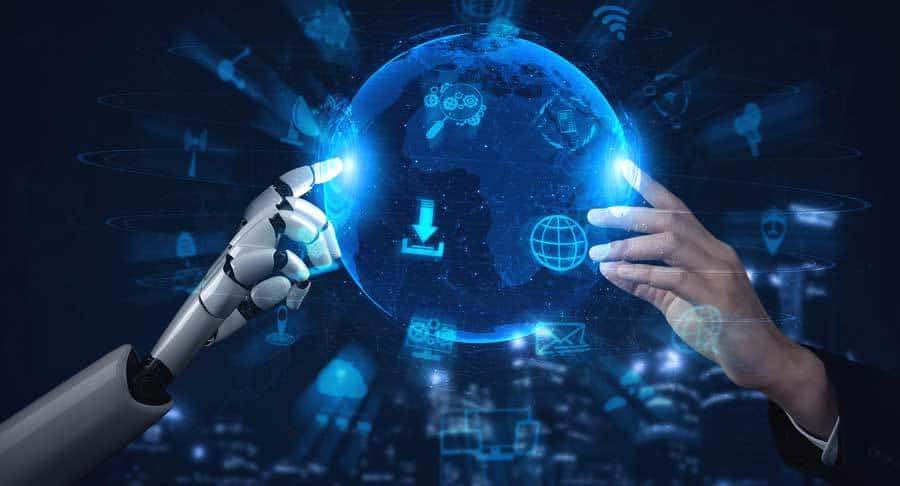
Human-robotic workspaces are starting to become more common across many sectors. As human-robotic collaboration increases and spreads out of manufacturing becoming a feature of many workplaces, there comes a question. What is the impact of human-robotic working on employees? New research into the impact of human-robotic integration was published recently (and sent to our members in April 2019).
Human-machine collaboration
As we start to move out of industry 4.0 and into industry 5.0, or from simple digitisation and the use of artificial intelligence into human-machine collaboration and human enhancement, one of the areas of increasing organisational and research focus centres around both how machines and humans can cooperate and how humans will have to adapt for this shift.
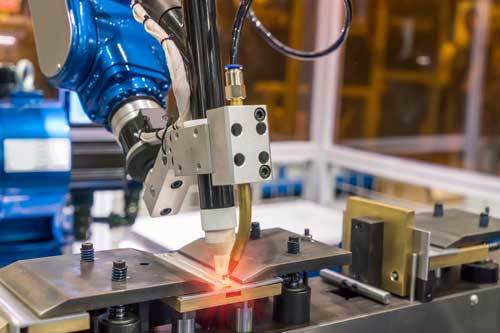
Industrial Robots
Until now, the vast majority of industrial robots have not been licensed to work in close proximity with humans. With a few exceptions, most robots within the workplace are strictly segregated from humans and are often working in cages or the humans are caged and separated from the robots, largely for health and safety reasons.
The robots are here
However, in the last 10 years there has been a significant upsurge in the number of robots licensed to work collaboratively with humans. The range of issues that exist when placing humans and robots in close proximity is considerable. These are not merely technical issues to ensure the safety of the humans, but also socio-technical, as the role of machines and robots move from completing discrete functions to working collaboratively with each other.
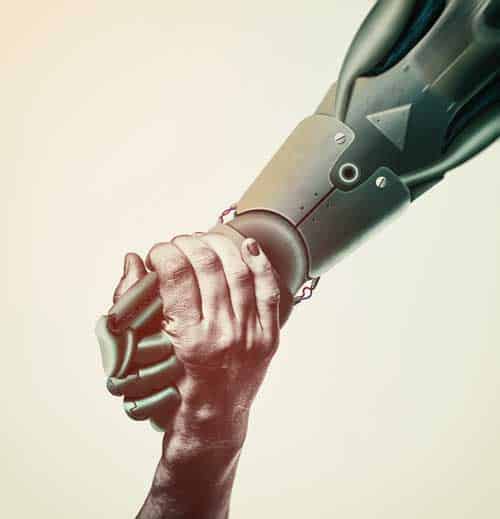
The impact of increasing robotisation
As more and more robots are designed and integrated within the human workspace it is becoming increasingly important for organisations to consider the impact that this has on humans, as well as the tasks themselves. Such issues include:
- Motivation
- Satisfaction
- Fatigue
- Cognitive load and demand
- General psychological issues
- Human adaptation problems
Recent studies
A number of recent studies have shown that working with, and in, close proximity to robots can have a significant impact on a range of dimensions for the people involved. This ranges from the impact of individuals working entirely alone and separated from other humans, but in the company of one or a number of robots, through to workplaces that have multiple robots and teams of humans working together for extended periods of time. Indeed, we are getting to the point at which robots will very shortly be ‘part of the team’ in a number of scenarios.
The question is how do these robot-human scenarios impact both humans, the workplace and their incumbent organisations?
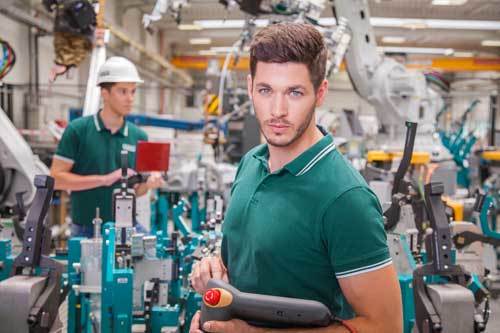
A new study
A new study by a team of researchers from the Department of Civil, Environmental, and Architectural Engineering at the University of Colorado, the Department of Aeronautics and Astronautics at the Massachusetts Institute of Technology and the Department of Computer Sciences and Engineering at the University of California has done a wide ranging literary review and primary research in human-robotic integrated workplaces to see what issues there are around integrating robotics into the workplace.
New paradigms
Previously, the common narrative about digitisation and use of robotics and machines in the workplace was that they would replace humans, particularly in repetitive, dangerous and error-prone tasks. Whilst in limited circumstances this has occurred it is becoming increasingly clear that human replacement is a very limited vision. What is starting to transpire is that leveraging the unique strengths of humans and robots to work together brings significant advantages to organisations.
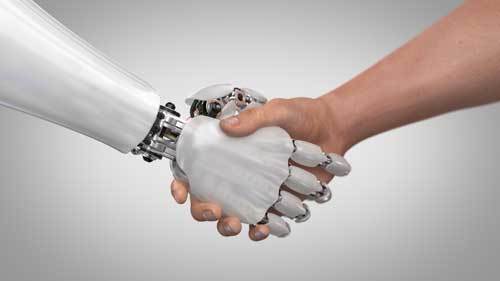
Collaboration
One of the problems with the human replacement model is that, if there is a breakdown anywhere in the production line or process, the entire process grinds to a halt. Recent studies are showing that the tangible cost of such stoppages are costing industry an average of between $1 million-$7 million an hour globally. Because many of these workplaces have been predicated on separating humans and robots, the entire production line has to be stopped in order for humans to enter the space to fix the problem. Now, whilst some of these workplaces are developing robots to fix machines themselves this, it is being found, is just pushing the problem a little further down the line. As a result, many human replacement programmes are now moving to industry 5.0 scenarios where robots and humans collaborate. A number of studies have found collaborative workplaces are significantly more flexible and adaptable, and have significantly fewer stoppages and other technical problems.
Findings
The study found that there are a series of positive and negative attributes that accompany human-robot collaborative workspaces. The most significant themes that the researchers discovered are:
- Humans have a need for human to human interaction
- Humans prefer to have jobs where they are physically active and move around
- Humans prefer to avoid repetitive jobs and prefer work variety
- Humans like to work at their own pace
- Humans work best when they are solving problems and doing things
Positive human-robotic interaction issues
The study found that human-robotic collaborative workspaces provide the following positives
- Can improve human interaction and team dynamics
- Designed to increase movement and exercise
- Provide variety for humans and reduce repetitive tasks
- Increase worker autonomy
- Improve management and communication
- Enhance problem-solving skills
- Improved pay
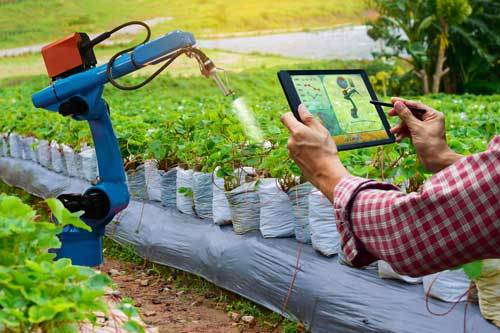
Negative human-robotic issues
However, the study also found that the following negative issues tend to arise in human-robotic collaborative work scenarios:
- Health issues, particularly mental health issues
- Increased long hours
- Creation of greater distance between the workers and senior management
- Having to work at the pace of the robot
- Increased staff turnover
- Increased repetitive work
- Increased shift work and scheduling problems
Organisational benefits
The study also found that there are a number of organisational positives that stem from human-robotic collaboration:
- Improved safety
- Improved worker health
- Reduced repetition
- Reduced workloads
- Reduced waiting
- Increased efficiency
- Increased production
- Cost reduction
- Improved materials handling
Recommendations
As a result of the study, the researchers found that there are a number of recommendations that organisations should consider when moving into human-robotic collaboration:
- Augment, don’t automate. Full automation is starting to show its weaknesses and is not quite as cost-effective as people had first thought. Using humans together with robots gets around these issues and is being shown to be significantly more productive.
- Careful task selection. It is important to completely think through and experiment with human-robotic integration. Using and leveraging the unique capabilities of humans and robots together can significantly increase both productivity and human issues, such as motivation, engagement, psychological health, expertise and a range of other attributes.
- Retrain and retain. The idea here is to recruit and employ tech savvy employees who are proactive, positive and adaptable. Additionally, employees who enjoy problem solving tend to be particularly suited to industry 5.0 situations
- Prioritise health and safety. Using robotics to enhance and amplify human capabilities appears to be the way forward and is being shown to be particularly effective in the workplace. For example, robots can be used to reduce physical injuries and also to enhance and support mental and psychological well-being. This includes keeping workers in touch with each other and with live organisational data throughout the organisation as they go about their tasks. This use of robotics/machine interaction with humans is proving to be particularly productive.
Conclusions
The old full workplace automation paradigms are starting to give way to augmented human paradigms where machines and robots work in collaboration with human beings, leveraging both their strengths. This is proving to be significantly more productive, adaptable and cost effective for most organisations. It is, therefore, important to consider how to effectively integrate and augment human capabilities with those of robots and machines.
Reference
Welfare, K. S., Hallowell, M. R., Shah, J. A., & Riek, L. D. (2019, March). Consider the Human Work Experience When Integrating Robotics in the Workplace. In 2019 14th ACM/IEEE International Conference on Human-Robot Interaction (HRI) (pp. 75-84). IEEE.
https://ieeexplore.ieee.org/abstract/document/8673139
Be impressively well informed

Get the very latest research intelligence briefings, video research briefings, infographics and more sent direct to you as they are published
Be the most impressively well-informed and up-to-date person around...

3obscenity